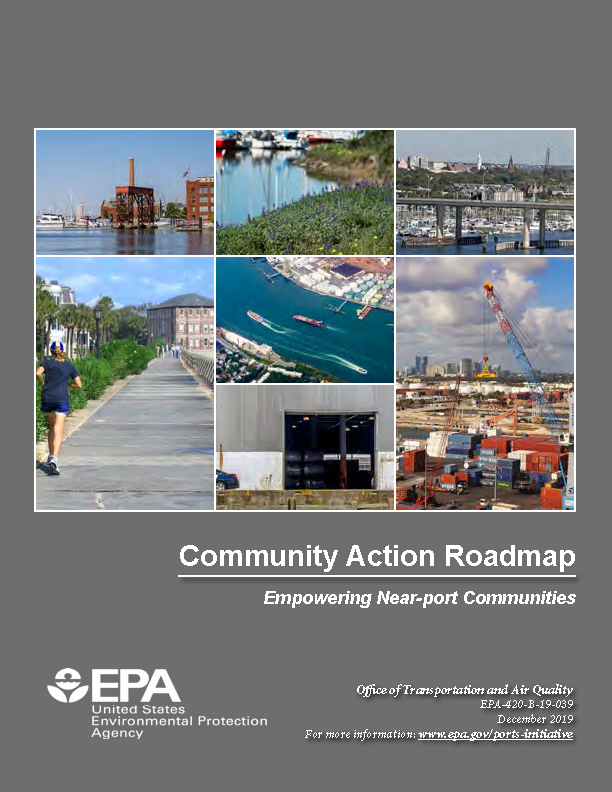|
Ports Primer for Communities,
Community Action Roadmap, and
Environmental Justice Primer for Ports
The three document toolkit has been updated based on feedback received from participants in the EPA Near-Port Community Capacity Building Project
series of pilots, other community stakeholders, port authorities and businesses, and government partners. The documents are designed to be utilized as companion documents to each other.
This update includes the PDF documents as well as creation of web format versions of the Community Action Roadmap, and the Environmental Justice Primer for Ports.
Ports Primer for Communities

The Ports Primer for Communities has been designed to provide assistance to near-port communities interested in becoming more involved in port decisions that may impact local land use, the environment and quality of life. The Ports Primer is intended to help community members participate effectively in the decision-making process and is available in two formats: An interactive PDF document that can be downloaded and a webpage format. Key sections of the Ports Primer for Communities are:
- The Role of Ports;
- How Ports Work;
- Port-Community Relations;
- Land Use & Transportation;
- Local & Regional Economy;
- Environmental Impacts;
- Tools & Resources; and
- Glossary of Ports Related Terms.
Environmental Justice Primer for Ports
The
Environmental Justice Primer for Ports is intended to help
port decision-makers better understand the needs of near-port communities, how they can help address these needs, and build productive community relationships during planning activities and operations. This resource contains two sections available as a PDF document that can be downloaded and in a
new web format. The sections are the following:
- Section A: Provides port decision-makers with an overview of environmental justice principles and how they apply within the context of port operations and decision-making; and
- Section B Good Neighbor Roadmap: Provides a step-by-step guide to enhance community engagement, build and strengthen relationships, and improve quality-of-life outcomes for near-port communities.
Community Action Roadmap
 The
Community Action Roadmap
provides a step-by-step guide to help near-port communities effectively engage in port decisions that may impact local land use, environmental health and quality of life. This resource is available as a PDF document that can be downloaded and in a new webpage format. The following sections are included.
- Overview of Six Steps of Engagement;
- Step 1: Prioritize Goals and Concerns;
- Step 2: Identify Levers for Change;
- Step 3: Build Relationships;
- Step 4: Develop an Action Plan;
- Step 5: Make Your Case;
- Step 6: Build Momentum; and
- Community Action Resources
|